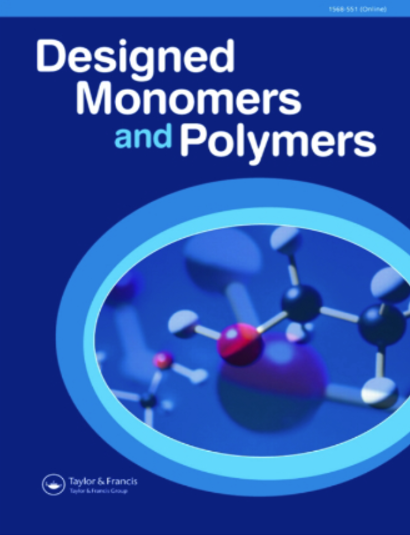Zn(II) coordination polymers: therapeutic activity and nursing application values against coronary heart disease
IF 1.8
4区 化学
Q3 POLYMER SCIENCE
引用次数: 1
Abstract
ABSTRACT In the current research, two coordination polymers (CPs) have been produced solvothermally on the basis of a semi-rigid multifunctional tricarboxylate, i.e., 5-(3,4-dicarboxylphenoxy) nicotic acid (H3L), and the chemical compositions of the two compounds are [Zn(H2L)2(H2O)2] 1 and [Zn(HL)(2,2'-bpy)] (2, 2,2'-bpy = 2,2'-bipyridine), respectively. The structures and CHN analysis of both complexes were researched. The structural analysis results show that complex 1 features a 2D layered network with sql-type topology and complex 2 demonstrates a 2D layered network with uninodal hcb topology. The therapeutic activity and nursing application values of compounds against coronary heart disease were explored, and their relevant mechanism was assessed in meantime. The endothelin (ET) and prostacyclin (PGI2) contents released by the arterial endothelial cells into plasma were determined with ELISA assay. In addition to this, the alpha granule membrane protein 140 (GMP140) on the platelet was determined with real-time RT-PCR assay.Zn(II)配位聚合物对冠心病的治疗作用及护理应用价值
摘要在目前的研究中,以半刚性多官能三羧酸为原料,溶剂热法合成了两种配位聚合物,即5-(3,4-二羧基苯氧基)烟酸(H3L),其化学组成分别为[Zn(H2L)2(H2O)2]1和[Zn(HL)(2,2'-bpy)](2,2,2'-ppy=2,2'-联吡啶)。对两种配合物的结构和CHN分析进行了研究。结构分析结果表明,复合体1具有sql型拓扑的二维分层网络,复合体2具有单峰hcb拓扑的二维层状网络。探讨了复方制剂对冠心病的治疗作用和护理应用价值,并对其相关机理进行了评价。用ELISA法测定动脉内皮细胞向血浆中释放的内皮素(ET)和前列环素(PGI2)含量。除此之外,用实时RT-PCR测定法测定血小板上的α颗粒膜蛋白140(GMP140)。
本文章由计算机程序翻译,如有差异,请以英文原文为准。
求助全文
约1分钟内获得全文
求助全文
来源期刊

Designed Monomers and Polymers
化学-高分子科学
CiteScore
3.30
自引率
0.00%
发文量
28
审稿时长
2.1 months
期刊介绍:
Designed Monomers and Polymers ( DMP) publishes prompt peer-reviewed papers and short topical reviews on all areas of macromolecular design and applications. Emphasis is placed on the preparations of new monomers, including characterization and applications. Experiments should be presented in sufficient detail (including specific observations, precautionary notes, use of new materials, techniques, and their possible problems) that they could be reproduced by any researcher wishing to repeat the work.
The journal also includes macromolecular design of polymeric materials (such as polymeric biomaterials, biomedical polymers, etc.) with medical applications.
DMP provides an interface between organic and polymer chemistries and aims to bridge the gap between monomer synthesis and the design of new polymers. Submssions are invited in the areas including, but not limited to:
-macromolecular science, initiators, macroinitiators for macromolecular design
-kinetics, mechanism and modelling aspects of polymerization
-new methods of synthesis of known monomers
-new monomers (must show evidence for polymerization, e.g. polycondensation, sequential combination, oxidative coupling, radiation, plasma polymerization)
-functional prepolymers of various architectures such as hyperbranched polymers, telechelic polymers, macromonomers, or dendrimers
-new polymeric materials with biomedical applications
 求助内容:
求助内容: 应助结果提醒方式:
应助结果提醒方式:


